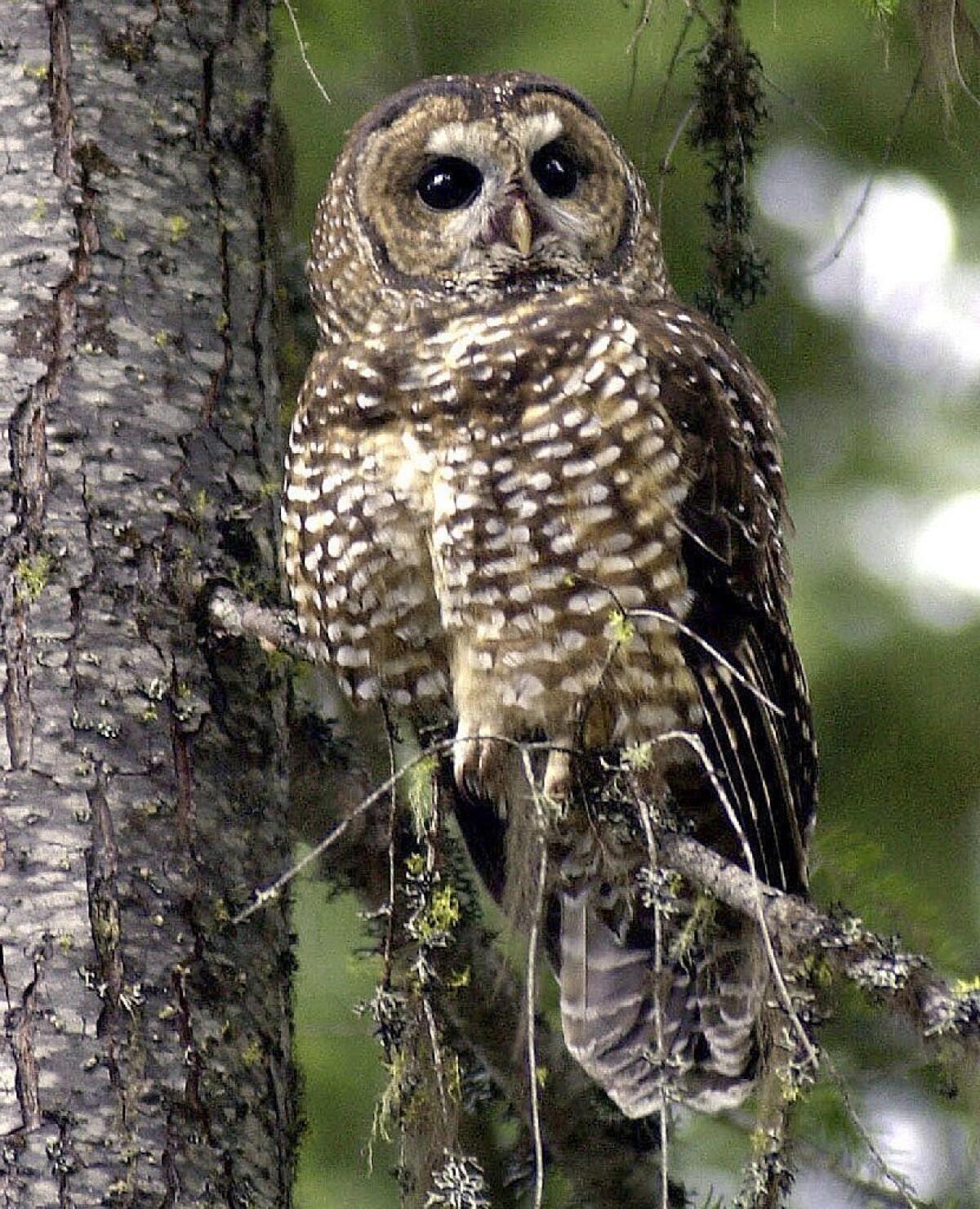Northern spotted owls are being ousted by barred owl invaders

As shy creatures of quiet places, federally threatened northern spotted owls have little tolerance for the larger, more aggressive barred owls moving into their ancient forests in the northwestern United States.
Trouble is, ousted spotted owls are colonizing less suitable habitat elsewhere, lowering the probability of successfully producing young, according to a study by U.S. Geological Survey and U.S. Forest Service biologists recently published in the journal Ecology.
The situation has become so desperate that federal biologists are considering efforts to remove, or kill, some of the barred owls occupying the old growth forests of Oregon, Washington and Northern California, Charles Yackulic, USGS research statistician and lead author of the study, said.
“We are not recommending removal of barred owls,” Yackulic said in an interview. “But the bottom line is this: Removal efforts would have to be conducted indefinitely in order to be effective. So, if we decide to go that route, our modeling suggests that we can minimize long-term costs by reducing the barred owl population by 75% and then managing them at that level.”
Janice Reid, a Forest Service biologist and coauthor of the study, added that management plans should also protect prime habitat from degradation “if we are to have any hope of slowing the spotted owl population decline in the face of the increasing barred owl population.”
In 1990, the U.S. Fish and Wildlife Service listed the northern spotted owl as a threatened species in Washington, Oregon and California. Habitat loss from logging was identified as a primary threat. At the time, the impact of the barred owl’s expansion into its range was regarded as unknown but of considerable concern.
A century ago, barred owls were only found in the eastern United States. For reasons that remain unclear, the species has been expanding its range west of the northern plains for about eight decades.
Today, the two owls have overlapping territories and diets. Spotted owls, however, are no match for the invaders, which hunt over wider areas and are prone to defend their territories with force.
Past studies of these competitors have focused on one species at a time. Yackulic’s team analyzed the shared dynamics of both species by using models based on 22 years of survey data collected within a 1,000-square-kilometer site near Roseburg, Ore.
“The rate at which barred owls give up their territories is much lower than that of spotted owls,” Yackulic said. “As a result, spotted owls at this site, and in many other areas, are declining while barred owl numbers steadily increase.”







